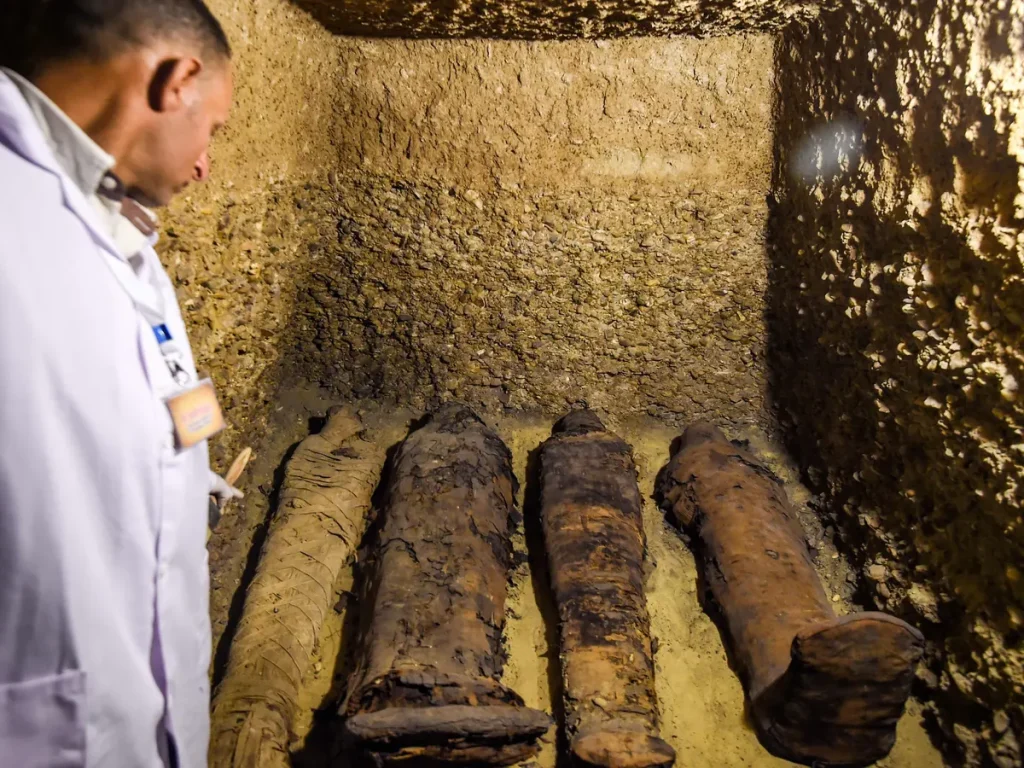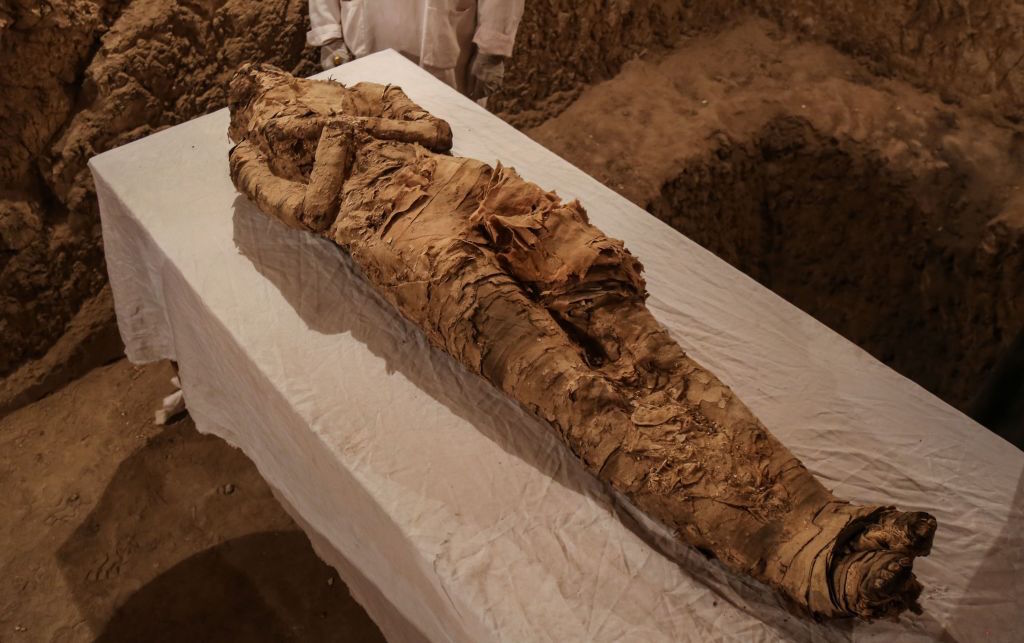The two tombs were built sometime after the 18th dynasty (1550–1292 BCE), and are connected to the vizier Amenhotep-Huy, a high-ranking official who served under pharaoh Amenhotep III. Two chambers connect the newly discovered tombs to the vizier’s burial place, a chapel containing 30 columns with epigraphs.

One of the large wall paintings in the tomb of Amenhotep-Huy in Luxor, Egypt.COURTESY ARCHAEOLOGY WIKI
Sixty mummies were found in two tombs in the ancient Egyptian city Luxor by a team of Spanish archaeologists.
The site is a rich example of the architectural style and “evidence that the vizier’s tomb at some point became a necropolis,” according to Francisco Martín-Valentín, director of the Madrid-based Institute of Ancient Egyptian Studies and the leader of the Vizier Amenhotep Huy Project.

Working with the institute’s co-director Teresa Bedman, Martín-Valentín led a team of 22 Spanish Egyptologists and eight Egyptian experts on the excavation.
“They began to build other tombs from different dynasties within the vizier’s tomb, since the place was sacred,” Martín-Valentín added.
Amenhotep Huy was vizier to Amenhotep III, who ruled Egypt from roughly 1386–1350 BCE, during the last third of his reign. Known as an opposition leader, he was against the religious practices promoted by the pharoah’s son Akhenaten.

Until this discovery, all the mummies buried in the area were senior officials of the clergy of Amun of Thebes. Since the bodies were mummified in death, experts said they were certain these bodies belonged to members of higher social classes.
The Spanish news agency Efe posted a video on YouTube describing how the Spanish archaeological mission discovered the tombs late last year.

LUXOR, EGYPT – DECEMBER 09: An ancient mummified body is seen that belongs to the 18th Dynasty pharaohs (B.C. 1550-1292) in Dra Abu el-Naga district of Luxor, Egypt on December 09, 2017. (Photo by Ibrahim Ramadan/Anadolu Agency/Getty Images)
An exhibition of the contents of the vizier’s tomb, including a sarcophagus adorned with the god Amun, is on view at the Luxor Museum. Excavations are slated to resume at the end of September, with the restoration of the vizier’s chapel and the reconstruction of six columns.